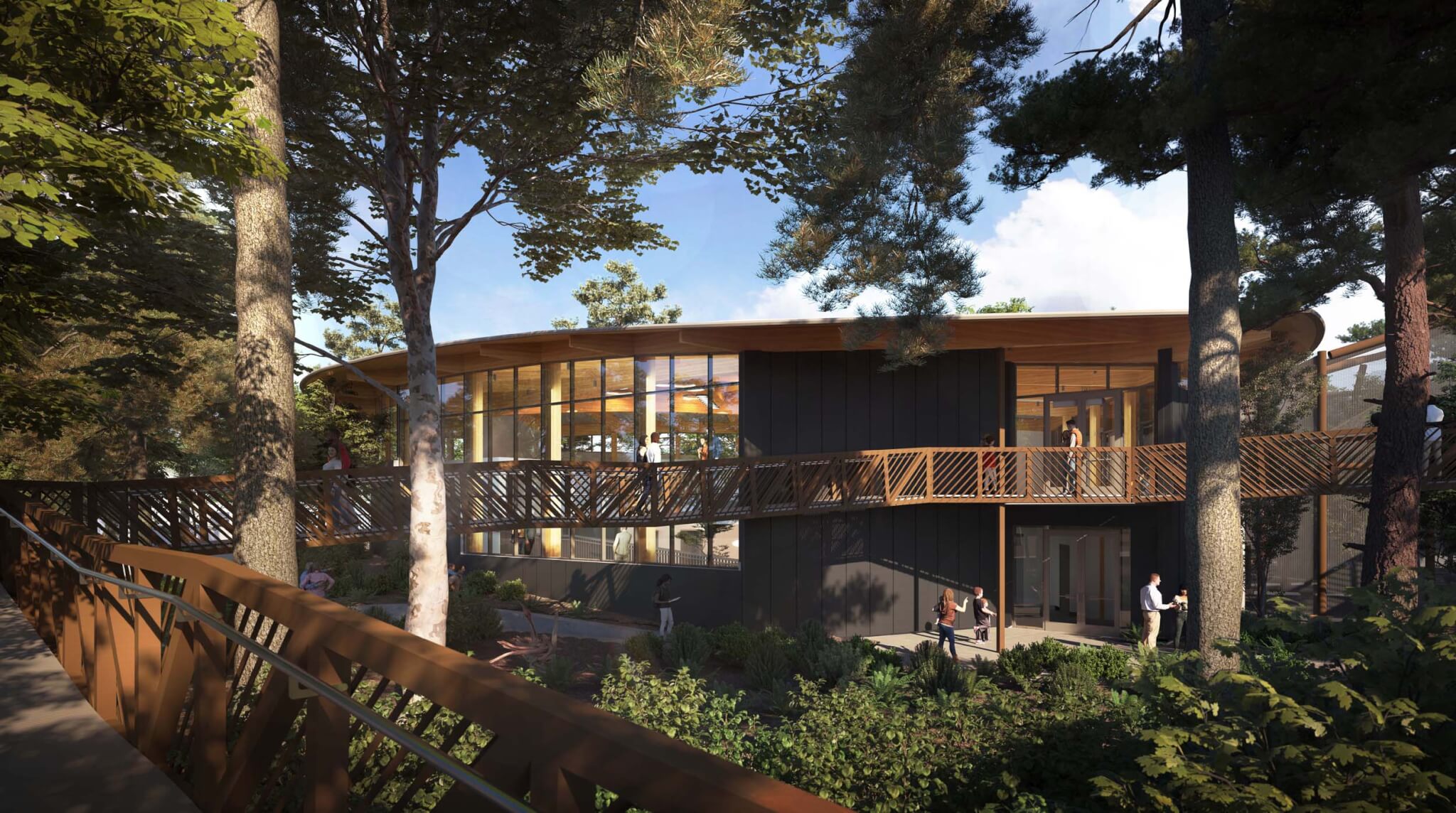At Forest Trailhead, LMN Architects and Seattle’s Woodland Park Zoo have extended forest stewardship from the words of informational posters into the eaves of a building’s own construction—an effort that doesn’t go unnoticed in the Pacific Northwest, a timber capital of the U.S.
At Woodland Park Zoo, a new pavilion built using mass plywood and a forest landscape exhibit will literally elevate the visitor’s understanding of forest habitats, ecosystems, and conservation efforts. LMN Architects is leading the project, which encompasses the new building and its immersive surroundings to make for a zoo trip that is interactive, multi-sensory, and educational.
Following Forest Trailhead
The new Forest Trailhead at Woodland Park Zoo will be located adjacent to the zoo’s entrance. The 12,000-square-foot pavilion will be nestled behind the Guest Services building. A circuitous walkway, lined with a wooden railing, forms a trail under a canopy of trees. The path places visitors at the vantage points of forest creatures housed at the zoo, among these tree kangaroos and red pandas. These near face-to-face experiences continue inside.
The path, hoisted above a bed of lush ferns, leads to the pavilion entrance. Renderings show the building clad in dark wood. The exterior material will be sourced from recycled composite. Avian friends will be met with bird-safe glazing in a cognizant effort to prevent unnecessary strikes. The glazing offers a look inside to an atrium outfitted in mass plywood.

The wood forms a railing that snakes around an accessible ramp that winds through the two-story space. The part-gallery, part-viewing platform will be crowned with a decorative take on plywood framing construction: criss-crossing trusses and wood planks provide both structural support and visual interest. To recall the dappling effect seen when sun hits between tree leaves and branches on forest ground, skylights will be used to diffuse shapes across the walls and floors of the space to illustrate this. It’s in this way, among others, that the project presents a concerted effort to elicit an interconnectedness between habitat, building, and practice.

Connections to Conservation
“From the outset, Woodland Park Zoo’s global conservation work has inspired and shaped all aspects of the Forest Trailhead,” Scott Crawford, LMN Architects partner, said. “Interconnectedness was a driving theme as we considered community outreach and engagement, the building form and circulation, materials, interpretive stories and the visitor experience.”
LMN principal Jennifer DuHamel added, “With connection as its watchword, the new pavilion signals the future of zoo experiences, where visitors are given agency to find their own path, uncovering the inherent interconnectedness of the world’s forests.”
Inside, visitors can expect to get up close to animals that call forests home. Interpretive signage will give guests a primer on forest conservation practices made by Woodland Park Zoo. Ceiling-height glass windows form transparent walls nearly all across the upper level. They offer views into the habitats of forest animals camped out in the leafy treetops.
Tree-dwelling reptiles, amphibians, fish, and invertebrates will be behind glass habitats lining the walls on the lower level.

Woodland Park Zoo’s Forest Trailhead checks a lot of boxes when it comes to sustainable practices. In using mass plywood in lieu of mass timber, the zoo is reducing production waste. Solar panels on the roof will cut back on energy costs. The project is targeting LEED Gold.
LMN Architects is working with landscape designers Walker Macy and has also engaged Indigenous consultants to inform the design and plantings. Construction is expected to complete in 2026.

